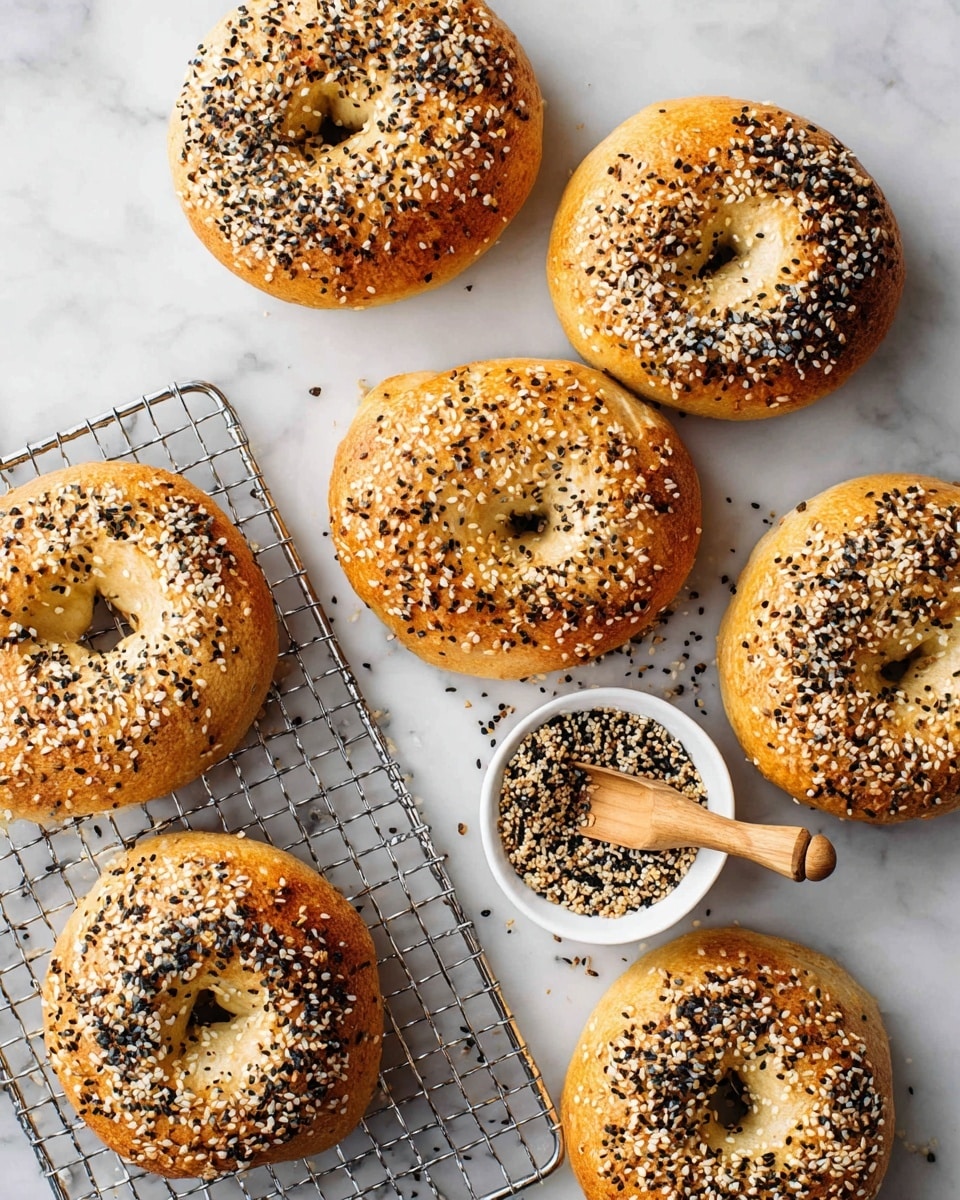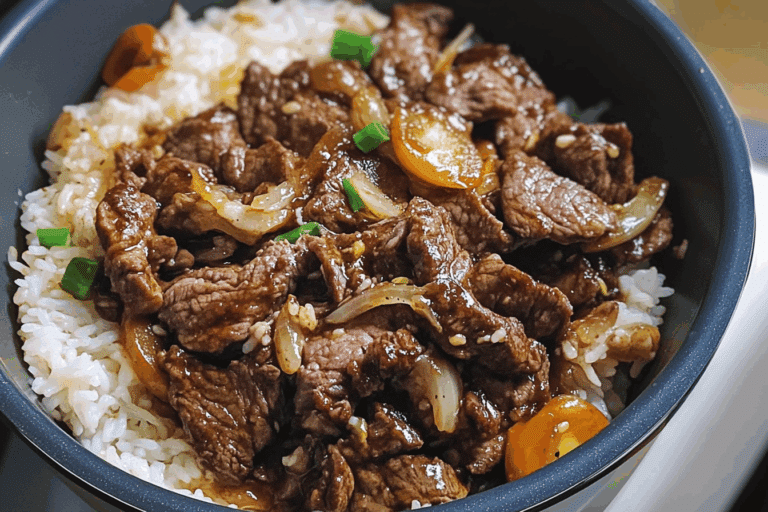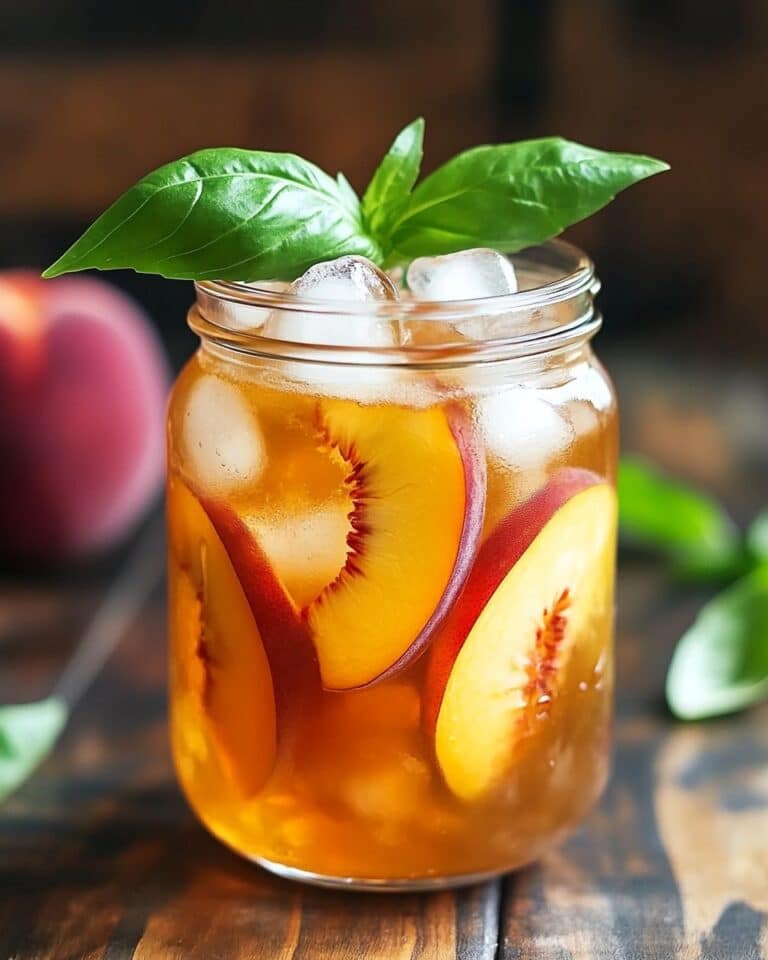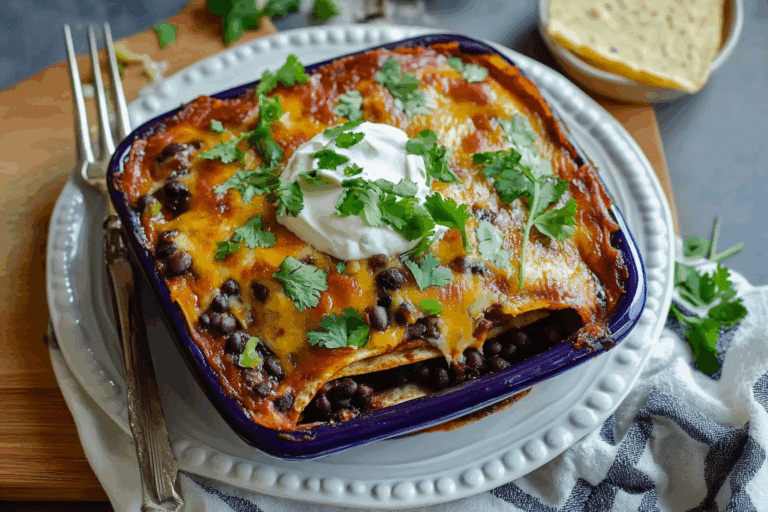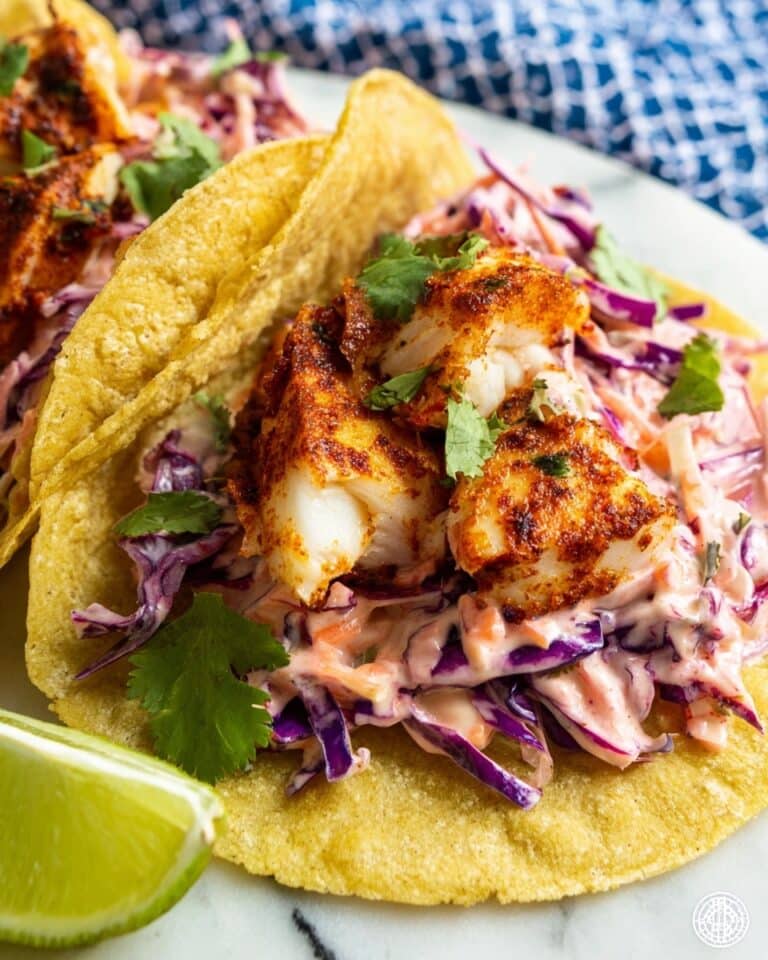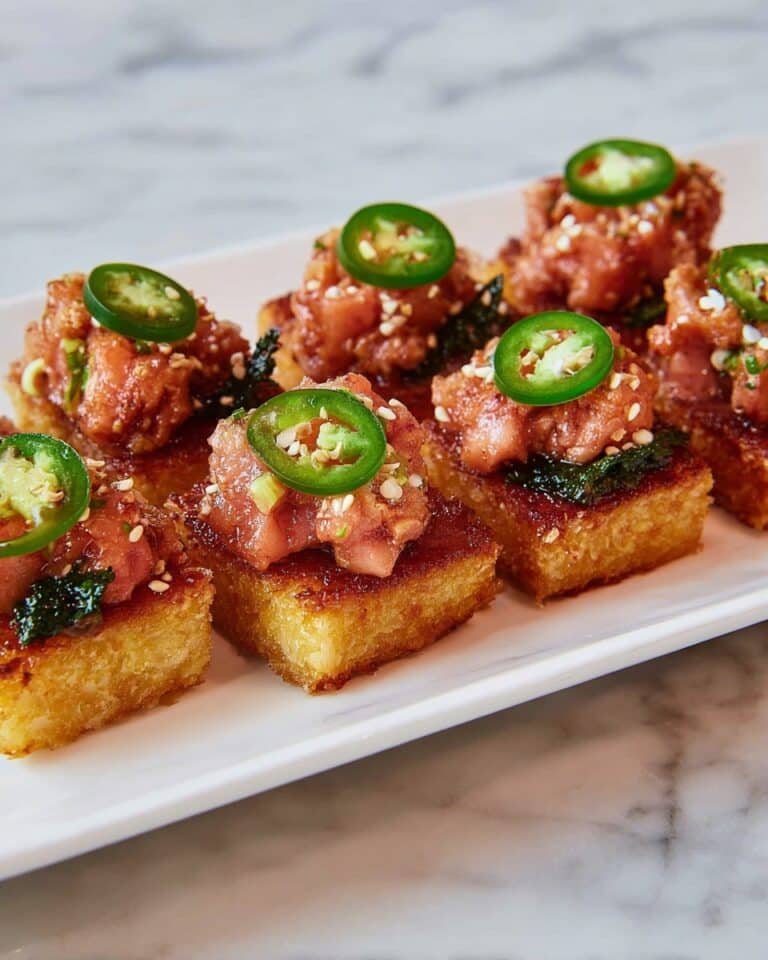Homemade Bagels with Maple Syrup and Sea Salt Recipe
There’s something truly magical about homemade bagels, especially when you combine the sweet warmth of maple syrup with the crunch of sea salt. This Homemade Bagels with Maple Syrup and Sea Salt Recipe brings that perfect balance of flavors right into your kitchen. I’ve tried countless bagel recipes over the years, but adding that subtle maple syrup touch—both in the dough and the poaching water—takes these bagels to a whole new level.
Whether you’re craving a cozy weekend breakfast or want to impress guests with a fresh, artisanal treat, this recipe is your go-to. The chewy texture, the gentle sweetness, and that little sprinkle of sea salt on top make every bite unforgettable. Trust me, once you make these bagels at home, you’ll never want store-bought again!
Ingredients You’ll Need
Each ingredient in this Homemade Bagels with Maple Syrup and Sea Salt Recipe plays a special role. Bread flour gives you the perfect chewiness, while the maple syrup adds a subtle sweetness that plays beautifully against the salty punch. Here’s what you’ll gather:
- Maple syrup or barley malt syrup: Maple syrup adds a lovely natural sweetness and works great as a sweetener in both the dough and the boiling water.
- Active dry yeast: Essential for the dough to rise and develop that classic bagel texture.
- Warm water: Activates the yeast; make sure it’s warm, not hot, to avoid killing the yeast.
- Bread flour: The high protein content here is key for that chewy, dense bagel structure.
- Sea salt: A must for bringing out flavor in the dough and for the finishing sprinkle on the bagels.
- Baking soda: Added to the poaching water to help create that shiny, golden crust while boiling.
- Egg white and water (optional): For brushing before baking if you want an extra glossy finish.
Variations
I love how versatile this Homemade Bagels with Maple Syrup and Sea Salt Recipe is. Feel free to get creative! You can tweak toppings or even the syrup to match your mood or season. Here are some twists I’ve tried that worked wonderfully:
- Variation: Add cinnamon or nutmeg to the dough. I once tried a spiced maple bagel version, and the warmth of the spices paired beautifully with the syrup and salt contrast. It’s a cozy fall favorite now.
- Use honey instead of maple syrup. If you don’t have maple syrup, honey also gives a lovely sweetness, but the flavor will be a bit different—still delicious.
- Top with sesame or poppy seeds. I enjoy adding seeds before baking for extra texture and flavor, especially if I’m making bagels for a brunch party.
- Make whole wheat bagels. Swap half of the bread flour with whole wheat for a nuttier, heartier bagel.
How to Make Homemade Bagels with Maple Syrup and Sea Salt Recipe
Step 1: Activate the yeast and mix the dough
Start by dissolving 1 tablespoon of maple syrup into 1¼ cups of warm water—make sure it’s around 100–110°F, so it’s warm but not hot. Sprinkle the active dry yeast over this and let it sit for about 5 minutes until foamy. I find this step super satisfying because you watch the yeast bubble alive, which means your bagels are off to a great start.
Next, mix in the bread flour and 2 teaspoons of sea salt. You can do this by hand or with a stand mixer fitted with a dough hook. Knead the dough until it’s smooth, elastic, and slightly tacky—this usually takes about 8-10 minutes. If the dough feels too sticky, sprinkle a little extra flour, but be careful not to add too much or your bagels might turn out dry.
Step 2: First rise and shaping your bagels
Place your dough in a lightly oiled bowl, cover it with a damp towel or plastic wrap, and let it rise in a warm spot for about 1 to 1½ hours, until doubled in size. This step is crucial for that airy inside texture.
Once risen, punch down the dough gently to release air. Then divide it into 8 equal pieces. Roll each piece into a smooth ball, then poke your finger through the center to form a hole. Gently stretch the hole so it’s about 2 inches wide, keeping the dough uniform. This part can be a little tricky at first, but just be patient—you’ll get the hang of making that perfect ring in no time.
Step 3: Boiling with maple syrup and baking soda
The secret to a great bagel crust lies in the boiling step. Fill a large pot with water and bring it to a boil. Add 1½ tablespoons of maple syrup, 2 teaspoons of baking soda, and ½ tablespoon of salt. The baking soda helps create the chewy exterior, while the maple syrup adds that subtle sweetness and color.
Carefully boil your bagels, 2-3 at a time, for about 1 minute on each side. Don’t overcrowd the pot—this keeps them from sticking together. Use a slotted spoon to transfer the bagels to a baking sheet lined with parchment paper.
Step 4: Bake until golden and perfect
If you want that shiny finish, whisk an egg white with a tablespoon of water and brush it over the bagels before baking. Then sprinkle a pinch of sea salt on top for that irresistible flavor contrast.
Bake in a preheated oven at 425°F (220°C) for 15-20 minutes, turning halfway through if your oven isn’t baking evenly. You’re looking for a beautifully golden, crusty exterior that gives way to a soft, chewy inside. The aroma at this point is just heavenly—like Sunday mornings in New York!
How to Serve Homemade Bagels with Maple Syrup and Sea Salt Recipe

Garnishes
I’m a big fan of simple garnishes that let the bagel’s flavor shine. A sprinkle of flaky sea salt or a dusting of cinnamon sugar can be delightful. Sometimes, I’ll spread cream cheese or a bit of soft butter with an extra drizzle of maple syrup to enhance that sweet-savory combo. If you’re feeling fancy, a smear of ricotta with fresh berries pairs beautifully.
Side Dishes
These bagels make a perfect base for brunch plates. I like serving them alongside scrambled eggs, crispy bacon, or even a fresh fruit salad. If you’re going to enjoy them as a snack or breakfast, a cup of strong coffee or chai tea is the perfect match.
Creative Ways to Present
For gatherings, I’ve laid these bagels out on a wooden board with little bowls of cream cheese, nut butter, and jam. Everyone gets to customize their own, which is always a hit. Another idea is slicing them and making mini bagel sliders with smoked salmon, capers, and dill—a real crowd-pleaser at brunch parties!
Make Ahead and Storage
Storing Leftovers
I like to store leftover bagels in an airtight container at room temperature if I plan to eat them within a day or two. That keeps them soft and fresh. If you want to keep them longer, I recommend freezing immediately to lock in freshness.
Freezing
Freezing is a lifesaver for me with this Homemade Bagels with Maple Syrup and Sea Salt Recipe. I slice them first, then place pieces in a zip-top bag. This way, I can toast just what I need later without thawing the whole bagel. They maintain their texture remarkably well.
Reheating
To reheat, I pop the frozen bagel slices directly into the toaster. If you have a toaster oven, even better—you get a perfect warm, slightly crisp bagel just like fresh. Avoid microwaving if you can, since that tends to make the bagels chewy or tough.
FAQs
-
Can I make these bagels without maple syrup?
Absolutely! While maple syrup adds a lovely flavor and helps with browning, you can substitute honey or barley malt syrup. If you don’t have any sweetener, you can omit it altogether, but the bagels might be less golden and slightly less flavorful.
-
Why do we boil bagels before baking?
Boiling sets the crust quickly and prevents the bagels from rising too much in the oven, giving them their signature dense and chewy texture. Adding baking soda and maple syrup to the poaching water enhances the crust’s color and flavor.
-
How do I know when the bagels are done baking?
Look for a deep golden-brown color and a firm crust. The bagels should sound hollow if you tap the bottom lightly. If they feel soft or pale, pop them back in for a few more minutes.
-
Can I make these bagels gluten-free?
Traditional bagels rely on gluten for their chewy texture, so making an exact gluten-free version is tricky. However, experimenting with gluten-free bread flours and xanthan gum can yield decent results, though the texture will differ from classic bagels.
Final Thoughts
This Homemade Bagels with Maple Syrup and Sea Salt Recipe is one of those special treats that fills your kitchen with warmth and delicious smells. I love how approachable it is, even if you’re new to bread-making, and how it rewards you with that perfect bagel experience at home. Give it a try—you’ll find it’s not just a recipe but a little ritual of comfort and joy that you’ll want to share again and again.
PrintHomemade Bagels with Maple Syrup and Sea Salt Recipe
This Homemade Bagels recipe guides you through creating classic, chewy bagels from scratch using simple ingredients like bread flour, active dry yeast, and maple syrup. The process includes making the dough, shaping the bagels, boiling them briefly in flavored water for that iconic chewy crust, and optionally adding a shiny egg wash before baking. Perfect for breakfast or a snack, these bagels can be customized with your favorite toppings.
- Prep Time: 30 minutes
- Cook Time: 25 minutes
- Total Time: 2 hours 15 minutes
- Yield: 8-10 bagels
- Category: Bread
- Method: Baking
- Cuisine: American
Ingredients
Dough
- 1 tablespoon maple syrup or barley malt syrup
- 1 (¼-ounce) pkg active dry yeast (2¼ teaspoons)
- 1¼ cups warm water
- 540 grams bread flour
- 2 teaspoons sea salt
Poaching Water
- 1½ tablespoons maple syrup
- 2 teaspoons baking soda
- ½ tablespoon salt
Toppings (optional)
- 1 egg white
- 1 tablespoon water
Instructions
- Activate the yeast: In a small bowl, mix the warm water with the yeast and 1 tablespoon of maple syrup or barley malt syrup. Let this sit for about 5-10 minutes until the mixture becomes frothy, indicating that the yeast is active.
- Make the dough: In a large mixing bowl, combine the bread flour and sea salt. Pour in the yeast mixture and stir until a dough forms. Knead the dough on a floured surface for 8-10 minutes until it is smooth and elastic.
- First rise: Place the kneaded dough into a lightly oiled bowl, cover with a damp cloth or plastic wrap, and let it rise in a warm place for 1 to 1.5 hours or until it doubles in size.
- Shape the bagels: Punch down the risen dough and divide it into equal portions (typically 8-10). Shape each portion into a ball, then poke a hole through the center with your finger and gently stretch to form the classic bagel shape.
- Second rise: Place the shaped bagels on a baking sheet lined with parchment paper. Cover and let them rest for about 20-30 minutes until they puff slightly.
- Prepare the poaching water: In a large pot, bring water to a boil and add 1½ tablespoons maple syrup, 2 teaspoons baking soda, and ½ tablespoon salt. Reduce the heat to maintain a gentle boil.
- Boil the bagels: Carefully drop the bagels into the boiling water in batches. Boil for about 1 minute on each side to develop a shiny, chewy crust.
- Optional egg wash: Beat the egg white with 1 tablespoon of water. Remove the bagels from the water with a slotted spoon, place them back on the baking sheet, and brush the tops with the egg wash for a glossy finish.
- Bake: Preheat the oven to 425°F (220°C). Bake the bagels on the baking sheet for 20-25 minutes or until golden brown and cooked through.
- Cool and serve: Remove the bagels from the oven and let them cool on a wire rack. Enjoy fresh with your favorite spreads or toppings.
Notes
- You can substitute barley malt syrup with an equal amount of maple syrup or honey if preferred.
- Ensure the water is warm, not hot, when activating yeast to avoid killing the yeast.
- Boiling bagels briefly before baking gives them their traditional chewy texture and shiny crust.
- The egg white wash is optional but helps achieve a golden, glossy bagel surface.
- Store leftover bagels in an airtight container or freeze them for longer shelf life.

